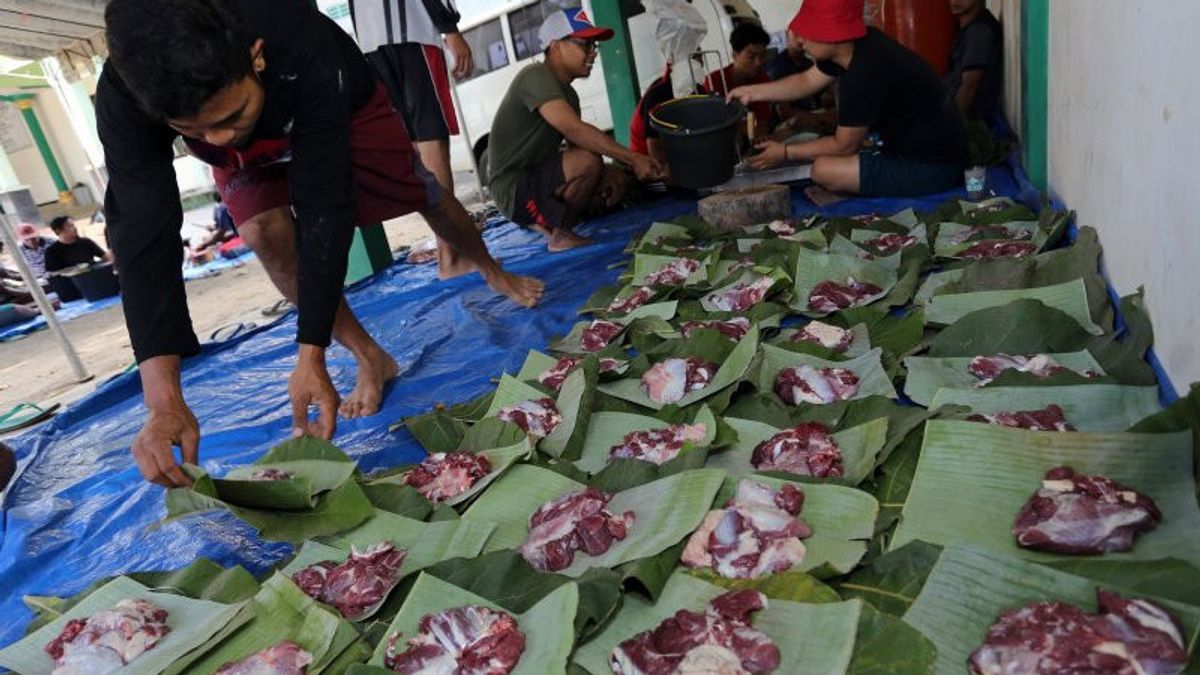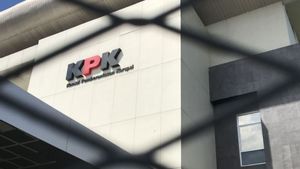JAKARTA - The Ministry of Religion has published guidelines for the implementation of the Eid al-Adha Sacrifice and Prayer in 1443 Hijri. This is done to provide a sense of security to Muslims in carrying out the worship.
"This circular regulates the procedures for the Eid prayer and the implementation of qurban, takbiran, Eid al-Adha sermons, the provisions of the shari'a for sacrifice, to technical slaughter, skinning, chopping, packaging, and distribution of sacrificial meat," said Minister of Religion Yaqut Cholil Qoumas in his statement, Sunday, June 26.
"For Muslims, slaughtering sacrificial animals on Eid al-Adha is a sunnah muakkadah. However, Muslims are advised not to force themselves to sacrifice during the PMK epidemic," he added.
In addition, if the community still wants to sacrifice, he asks to ensure that the sacrificial animal is in good health until the stage of slaughter. The Minister of Religion suggested slaughtering at the Slaughterhouse (RPH), to prevent the spread of PMK.
"Or entrust the purchase, slaughter, and distribution of sacrificial animals to the Amil Zakat Agency, the Amil Zakat Institution, or other institutions that meet the requirements," he said.
The following are the provisions in the Circular of the Minister of Religion Number SE 10 of 2022 concerning Guidelines for the Implementation of Eid Prayers and the Implementation of Sacrifice in 1443 Hijriah/2022 AD
General requirementsa. Muslims hold Eid al-Adha prayers and carry out sacrifices according to the provisions of Islamic law
b. In organizing Eid al-Adha prayers and carrying out sacrificial worship, mosque/musala administrators pay attention to the Circular of the Minister of Religion regarding the implementation of worship/religious activities in places of worship during the implementation of restrictions on community activities in accordance with the status of their respective regional levels and implement health protocols.
c. The administrators and managers of the mosque/musala as referred to in letter b are obliged to appoint officers who ensure the dissemination and application of health protocols to all congregants.
d. The missionaries/religious lecturers are expected to play a role in strengthening the values of faith, piety, unity, harmony, the benefit of the people, and nationality as well as preaching in a wise and polite manner in accordance with the guidance of the Qur'an, Sunnah, and not contradicting the problem of khilafiah.
e. The public is advised to recite the takbir on the eve of Eid al-Adha 1443 H/2022 AD and tasyrik day at the mosque/musala or their respective homes.
f. The use of loudspeakers refers to the Circular Letter of the Minister of Religion Number SE. 05 of 2022 concerning Guidelines for the Use of Loudspeakers in Mosques/Musala
g. Eid al-Adha prayers 10 Zulhijjah 1443 H/2022 AD can be held in mosques or in open fields with due observance of health protocols
Special TermsIn the implementation of the sacrifice, it is necessary to observe the following provisions:
a. For Muslims, slaughtering sacrificial animals on Eid al-Adha is a sunnah muakkadah. However, Muslims are advised not to force themselves to sacrifice during the Mouth and Nail Disease (FMD) epidemic.
b. Muslims are encouraged to buy sacrificial animals that are healthy and without defects according to the criteria and keep them in good health until the day of slaughter.
c. Muslims who intend to make sacrifices and are in an outbreak area or the outermost and suspected PMK areas, are encouraged to:
1) perform the slaughter at the Slaughterhouse (RPH); or
2) entrust the purchase, slaughter, and distribution of sacrificial animals to the Amil Zakat Agency, the Amil Zakat Institution, or other institutions that meet the requirements
d. Determination of criteria and slaughter of sacrificial animals in accordance with Islamic law
Criteria for sacrificial animals:
1) Types of livestock, namely: camels, cows, buffalo, and goats
2) of sufficient age, namely:
a) the camel is at least 5 (five) years old
b) cows and buffalo at least 2 (two) years old; and
c) goats are at least 1 (one) year old
3) The condition of the animal is healthy, including:
a) does not show clinical symptoms of FMD such as lethargy, blisters on the surface of the lining of the mouth of livestock including the tongue, gums, nose, and claws or nails
b) do not secrete excessive saliva/mucus, and
c) have no defects, such as blindness, limping, broken horns, severed tail, or damaged earlobes except those caused for identification
The slaughter of sacrificial animals is carried out at the required time, namely: Eid al-Adha and tasyrik days (11, 12, and 13 Zulhijjah)
e. The slaughter of sacrificial animals is prioritized at the RPH
f. In terms of limited number, range/distance, and capacity of the RPH, the slaughter of sacrificial animals can be carried out outside the RPH provided that:
1) carry out the slaughter of sacrificial animals in a large area and recommended by the relevant agencies
2) organizers are recommended to limit the presence of parties other than the officer for slaughtering the sacrificial animal and the person who is offering the sacrifice
3) officers apply health protocols when slaughtering, skinning, chopping, packaging and distributing meat
4) ensure the health of the sacrificial animal through coordination with the relevant offices/agencies; and
5) the slaughter is carried out by competent officers and in accordance with Islamic law
g. Officers and the public must pay attention to the Circular of the Minister of Agriculture regarding the implementation of animal sacrifice and slaughter in situations of foot and mouth disease.
3. The Head of the Provincial Office of the Ministry of Religion, the Head of the Regency/City Ministry of Religion, and the Head of the Sub-District Religious Affairs Office shall monitor the implementation of this Circular.
The English, Chinese, Japanese, Arabic, and French versions are automatically generated by the AI. So there may still be inaccuracies in translating, please always see Indonesian as our main language. (system supported by DigitalSiber.id)








